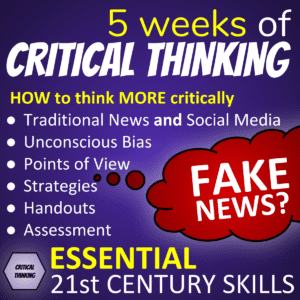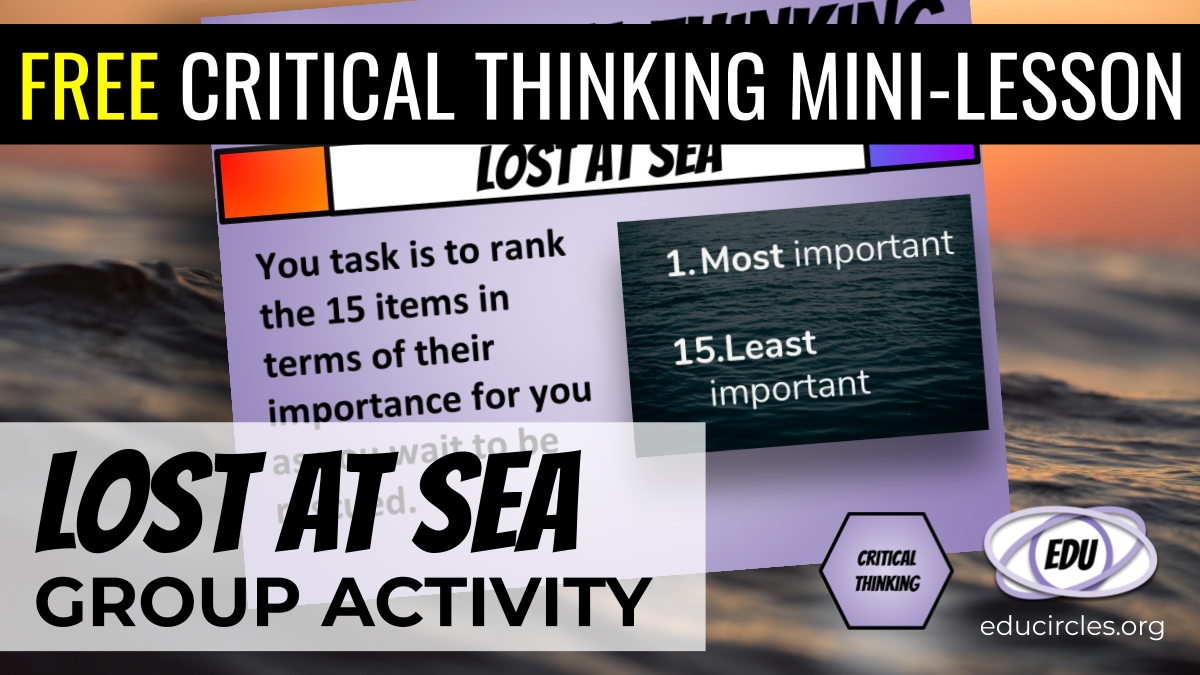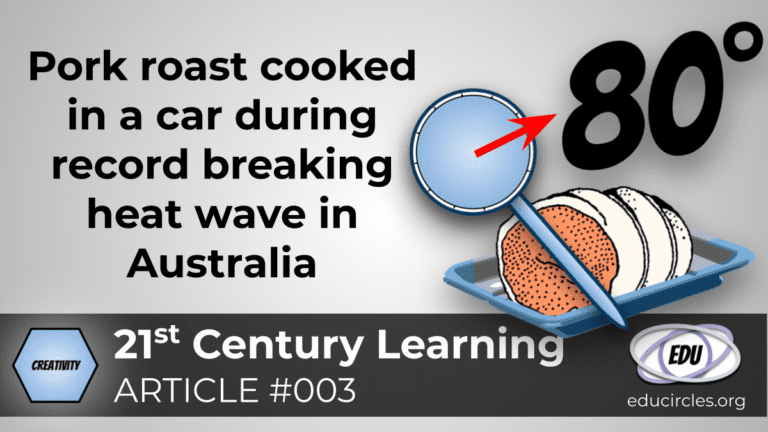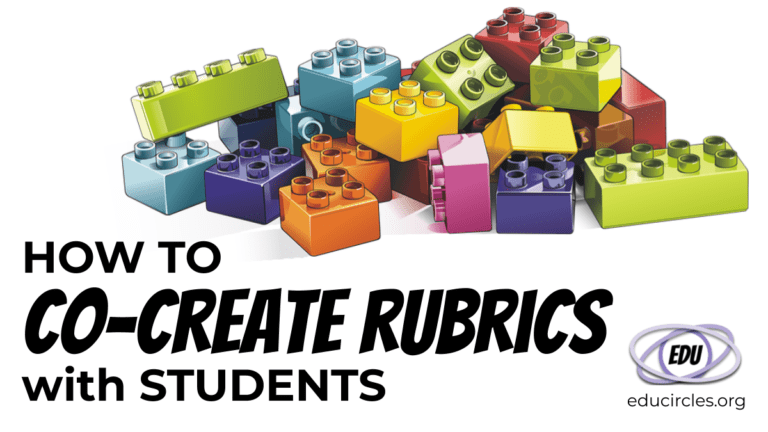LOST AT SEA activity (FREE Critical Thinking Lesson Plans)
Lost at Sea Critical Thinking activity last updated Oct 7, 2021:
The Lost at Sea Activity is a fantastic team-building activity.
Lost at Sea is a classic activity that can be found all across the Internet.
We’ve adapted it in our CRITICAL THINKING lesson plans to help teachers introduce the idea of criterion based decision making
Plus, we made the activity look visually appealing for school. Check it out!
Psst. It’s FREE! 2 HOURS and 101 SLIDES / PAGES of FREE CONTENT!
The original activity comes from PACE: Profession of Arms Centre of Excellence which is a dedicated champion to strengthening Air Force culture.
- The Pace website provides a variety of tools on their teamwork page.
- These include a series of TEAMBUILDER activities including the original “Lost at Sea” activity
Information presented on AF.mil is considered public information.
AF.mil is provided as a public service by the Office of the Secretary of Air Force (Public Affairs). Information presented on AF.mil is considered public information and may be distributed or copied. Use of appropriate byline/photo/image credits is requested.
SOURCE: https://www.af.mil/Disclaimer/
So, in this Educircles version of Lost at Sea, this activity has been adapted to highlight the importance of criteria based thinking (critical thinking), instead of relying solely on emotional intuitive responses.
In the original activity:
- Students are divided into groups.
- They are given a hypothetical scenario where they are on a yacht in the middle of the ocean.
- The yacht catches on fire and the students are given a list of 15 items that they need to rank in order of importance.
- At the end, the answers are given. (Rankings provided by an expert, in this case, the US Coast Guard)
The original goal according to PACEsetter is a tabletop scenario designed to
- “help individuals work together in a time constrained environment,
- collaborate on how a project should best be accomplished and
- experience pressure to go along with the crowd and see the consequences.”
Lost at Sea is also a fantastic opportunity to help us think more critically.
In this Educircles version, we suggest three strategies to help students think more critically:
- Use criteria
- Be open-minded
- Be full minded (have lots of high quality information to help make an informed decision)
We have adapted the original activity for students as follows:
- We provide a high-interest, visually appealing slideshow to introduce and explain the activity, objects, and answers to students.
- We explain with images and words what each of the 15 items are.
- We provide student worksheet that allows students to record their ranking based on their individual thinking, group thinking and based on criteria.
At the end of the activity, we invite students to think about strategies that might help them to
- trick other people, and
- think about strategies that might help them to think more critically.
Ultimately, the goal is to begin a conversation about what critical thinking is, and what it is not.
Critical Thinking Strategies used in the Lost at Sea Activity
Use criteria
- After students have had an opportunity to rank the 15 items based on their individual ideas, and group ideas, students are then given the criteria that the experts used.
- Criteria are a set of rules that we can use to help us make decisions.
- In this case, the criteria (according to the US Coast Guard) are to select objects that 1) attract attention to ourselves, and 2)help us to stay alive until we are rescued.
Be open-minded
- in any group scenario, team members can disagree because they’re coming from different perspectives.
- In critical thinking, it’s important to be able to stay open-minded and accept that other people’s points of view might be equally valid and deserve careful consideration.
- In fact in this scenario, some objects can be used in different ways – and depending on how they are used, they might be rank higher or lower.
- It’s up to the students to try to remain open-minded and consider opposing points of view.
- For example, the oil and gas mixture could be used as fuel for an engine. However, the criteria is not to try to get the land, but to stay alive until we are rescued. So from that perspective the oil and gas mixture might not be very useful.
- On the other hand, the oil and gas mixture can be lit and create a visible signal that can be seen from far away. In this case, this item becomes incredibly useful under the goal of attracting attention to ourselves.
Be full minded (have lots of high quality information to help you make an informed decision)
- One of the challenges of this activity is that students don’t always know what all the items are, or why they might be significant.
- In our slideshow, we explain what each item is and we provide a little bit of background information to help students make an informed decision about how to use the item.

LOST AT SEA ACTIVITY LESSON PLAN:
Note: the slides from this Taste of Critical Thinking come from our larger “Exploring the 6Cs – Chapter 6 Critical Thinking” lesson package, specifically the following slides: 1-35, 36-80, 97-101

How to make informed decisions (Critical Thinking Lesson Plans)
Critical thinking lesson plans help students make informed decisions by using strategies: use criteria, be open minded, identify bias, etc.
Learn More
LOST AT SEA – DAY/LESSON 1 – Introduction / Lost at Sea Activity (slides 1-35) – 45 MIN
- Introduction – 10 minutes
- Introduce concept of Critical Thinking (slides 1-7) – 5 min
- MINDS ON! Brainstorm strategies to trick people / think critically (slide 8) – 5 min
- Lost at Sea – 35 minutes
- Introduction of scenario (slides 9-17) – 5 minutes
- Step 1: Independent Ranking – 10 minutes
- Explanation of handout / items (slides 18-33) – 5 min
- Independent work period (slide 34) – 5 min
- Step 2: IN GROUPS (slide 35) – 20 minutes
LOST AT SEA – DAY/LESSON 2 – Lost at Sea Activity continued (slides 36-80) – 55 MIN
- Lost at Sea continued
- Step 3: CRITERIA GIVEN (slides 36-56) – 20 minutes
- Explain criteria (slides 36-39) – 5 min
- Review items (slides 40-54) – 5 min
- Work Period (slide 56) 10 min
- Step 4: ANSWERS – 10 minutes
- Instructions (slide 57-58)
- Answers with explanations (slides 59-73)
- How did we do? – 15 minutes
- Step 5: Calculate Individual Scores
- Step 6: Calculate Group Scores
- Step 7: Calculate Criteria Scores
- Discussion (slide 78-79) – 5 min
- Step 3: CRITERIA GIVEN (slides 36-56) – 20 minutes
- Reflection: Brainstorm strategies to trick people / think critically (slide 80) – 5 minutes
- Discussion: Obstacles and strategies (slides 81-85) – 5 minutes



